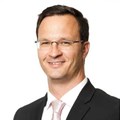The National Biodiversity Offset Guideline has been published. It specifically applies to applications for environmental authorisations but can be used by authorities making other decisions that may involve biodiversity offsetting.

Image source: Alfo Medeiros from
PexelsOn 23 June 2023, the Minister of Forestry, Fisheries and the Environment published the National Biodiversity Offset Guideline (BOG) for implementation. The BOG was published under section 24J of the National Environmental Management Act, 1998 (NEMA) and is applicable to applications for environmental authorisations (EAs) specifically.
However, it can be used by other authorities when taking decisions that may involve biodiversity offsetting – examples include NEMA section 24G EA applications; NEMA section 30A emergency directives; water use licence applications under the National Water Act, 1998; protected tree licence applications under the National Forests Act, 1998; waste management licence applications under the National Environmental Management: Waste Act, 2008; and land use management approvals under the Spatial Planning and Land Use Management Act, 2013. Competent authorities will have to consider the BOG when making decisions on EA and other applications.
Mitigation hierarchy approach
In recognition of South Africa's rich biodiversity which is being eroded and degraded over time, the BOG endorses the mitigation hierarchy approach. It stresses that an offset should only be considered as a last resort, ie. for remaining residual negative impacts on biodiversity of medium or high significance, after all other mitigation measures have been used – avoid; if impossible, minimise and remedy through rehabilitation.
The BOG provides that biodiversity offsets are not appropriate when NEMA-listed activities will have residual impacts on biodiversity of very high significance, including when residual negative impacts will result in loss of irreplaceable biodiversity. Such developments are fatally flawed and should be avoided.
The BOG sets out the desired outcomes of biodiversity offsets (if they are required) and the applicable principles for offsetting. It focuses on terrestrial and freshwater ecosystems (making it less relevant to individual species loss) and is not applicable to offshore marine and estuarine ecosystems.
Assessments
All new EA applications will now need to reference the applicability of the BOG, and should assess whether there would be any residual negative impact on biodiversity as a result of the development and if an offset is required.
Garyn Rapson and Nonhlanhla Mnengi 28 Sep 2022 Environmental Assessment Practitioners (EAPs) will need to make the final recommendation and must also calculate the significance of the impacts as prescribed in the BOG. Where the significance ratings for biodiversity impacts are contentious or contested, leading to uncertainty about the need for a biodiversity offset, the competent authority could call for independent peer review.
Offsetting
If an offset will be required, a dedicated Biodiversity Offset Report must be prepared by a specialist(s) and submitted as part of the environmental impact assessment reports submitted in support of the EA application. The Biodiversity Offset Report must meet the minimum requirements of the BOG and EA applicants must engage with conservation authorities and other relevant organs of state in confirming offset requirements, locating suitable offset sites, and developing offset proposals for consideration.
The BOG acknowledges that it takes much longer to complete all the steps in the biodiversity offsetting process (in practice, several years) than it does to complete the EA application process. It sets out what can and cannot be achieved during the EA application process and what needs to be built in as conditions of EAs, or needs to be managed through contractual agreements that survive any lapse or expiry of the EA.
Finally, the BOG recommends that the Department of Forestry, Fisheries and the Environment should establish and maintain an electronic register of biodiversity offset sites in South Africa, called the National Biodiversity Offset Register. A spatial layer representing the biodiversity offset sites should be made publicly available online to ensure that the locations of existing biodiversity offset sites are known.

















